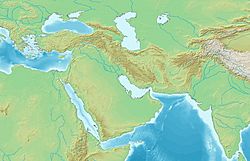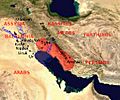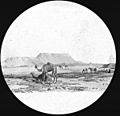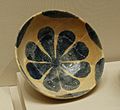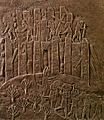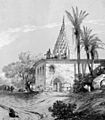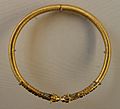Susa facts for kids
|
شوش
|
|
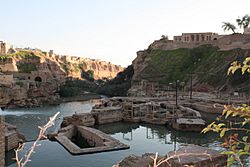 |
|
| Location | Shush, Khuzestan Province, Iran |
|---|---|
| Region | Zagros Mountains |
| Coordinates | 32°11′26″N 48°15′28″E / 32.19056°N 48.25778°E |
| Type | Settlement |
| History | |
| Founded | Approximately 4200 BCE |
| Abandoned | 1218 CE |
| Events | Battle of Susa |
| Site notes | |
| Condition | Abandoned and in ruins |
| UNESCO World Heritage Site | |
| Official name | Susa |
| Criteria | Cultural: i, ii, iii, iv |
| Inscription | 2015 (39th Session) |
Susa (Ancient Greek: τά Σοῦσα) was a very old city in Iran. It was an important place for several powerful groups. These included the Elamites, Persians, and Parthians. They all built their empires around this area.
Susa was located in the lower Zagros Mountains. It was about 250 kilometers (155 miles) east of the Tigris River. The city sat between the Karkheh and Dez Rivers. This made it a good spot for trade and farming.
The ancient city site covers about one square kilometer. It has three large hills, or "mounds." These are called the Apadana mound, the Acropolis mound, and the Ville Royale (royal town) mound. Each mound holds secrets from different times in Susa's history.
Today, the modern Iranian town of Shush stands where ancient Susa once was. Shush is believed to be the same place as Shushan. This name is mentioned in the Book of Esther and other old books.
Contents
What Was Susa Like?
Susa was one of the oldest cities in the world. People lived there as early as 4200 BCE. This means it was a busy place for thousands of years. It was a center for culture, trade, and power.
Early History of Susa
Susa started as a small settlement. Over time, it grew into a large city. It became the capital of the Elamite kingdom. The Elamites were a powerful group in ancient Iran. They had their own writing system and art.
Archaeologists have found many amazing things in Susa. These include pottery, tools, and clay tablets. These items tell us about the daily lives of the people. They also show how advanced the Elamite culture was.
Susa Under Persian Rule
Later, Susa became very important to the Persian Empire. It was one of their main capital cities. Famous Persian kings like Darius the Great built grand palaces there. These palaces were known for their beautiful decorations.
The Persian kings used Susa as a place to rule their vast empire. People from many different lands came to Susa. This made it a diverse and busy city. It was a hub for trade routes and political decisions.
Susa in Later Empires
After the Persians, Alexander the Great conquered Susa. He even held a famous mass wedding there. Later, Susa was part of the Seleucid Empire. This was a Greek kingdom that ruled parts of Asia.
Susa continued to be important under the Parthian and Sasanian empires. It was a key city for trade and administration. The city finally declined and was abandoned around 1218 CE.
Why Was Susa Important?
Susa was important for many reasons. Its location made it a natural meeting point. It connected different cultures and trading networks. It was a bridge between the ancient Near East and the Iranian plateau.
The city also played a big role in history and religion. It is mentioned in ancient texts, including the Bible. This shows its lasting impact on the world. Today, Susa is a UNESCO World Heritage Site. This means it is a special place that needs to be protected.
Images for kids
-
Map showing the area of the Elamite kingdom (in red) and the neighboring areas. The approximate Bronze Age extension of the Persian Gulf is shown.
-
Goblet and cup, Iran, Susa I style, 4th millennium BC - Ubaid period; goblet height c. 12 cm; Sèvres – Cité de la céramique, France
-
Globular envelope with the accounting tokens. Clay, Uruk period (c. 3500 BCE). From the Tell of the Acropolis in Susa. The Louvre
-
Silver cup from Marvdasht, Iran, with a linear-Elamite inscription from the time of Kutik-Inshushinak. National Museum of Iran
-
The marriages of Stateira II to Alexander the Great of Macedon and her sister, Drypteis, to Hephaestion at Susa in 324 BC, as depicted in a late-19th-century engraving.
-
Letter in Greek of the Parthian king Artabanus III to the inhabitants of Susa in the 1st century CE (the city retained Greek institutions since the time of the Seleucid empire). Louvre Museum.
-
Anthropoid sarcophagus
-
Lion on a decorative panel from Darius I the Great's palace
-
Marble head representing Seleucid King Antiochus III who was born near Susa around 242 BC.
-
A tablet showing the destruction of Susa by Ashurbanipal in 647 BC
-
Winged sphinx from the palace of Darius the Great at Susa.
-
Archers frieze from Darius' palace at Susa. Detail of the beginning of the frieze, left. Louvre Museum.
-
Ribbed torc with lion heads, Achaemenid artwork, excavated by Jacques de Morgan, 1901
-
Herm pillar with Hermes, from the well of the "Dungeon" in Susa.
See also
 In Spanish: Susa para niños
In Spanish: Susa para niños



